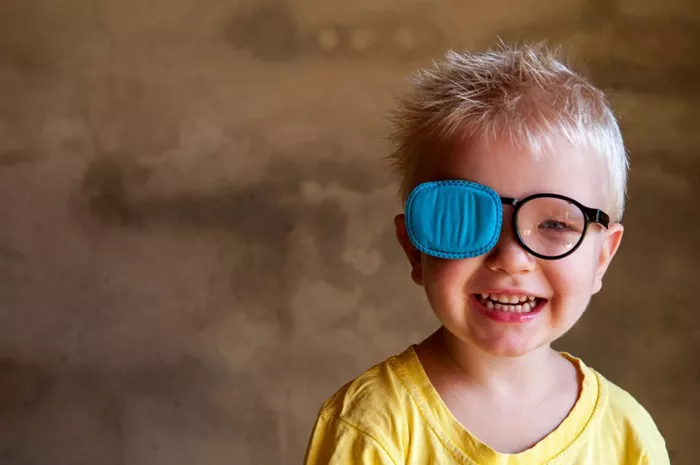Lazy eye, medically known as amblyopia, is a common vision disorder that affects approximately 3% of the population, particularly children. It occurs when one eye fails to achieve normal visual acuity, often due to a misalignment of the eyes or significant differences in refractive error. While surgery is sometimes considered for severe cases, many effective nonsurgical treatments can help improve vision in individuals with lazy eye. This article explores various nonsurgical methods to fix lazy eye, emphasizing practical strategies that can be employed without surgical intervention.
Understanding Lazy Eye
What Causes Lazy Eye?
Lazy eye typically develops in childhood and can result from several factors:
Refractive Errors: Differences in vision between the two eyes, such as nearsightedness (myopia), farsightedness (hyperopia), or astigmatism.
Strabismus: Misalignment of the eyes, where one eye may turn inwards, outwards, upwards, or downwards.
Deprivation: Conditions like cataracts that obstruct vision in one eye during critical periods of visual development.
Importance of Early Detection
Early detection and treatment are crucial for the successful management of lazy eye. The brain’s ability to adapt and compensate for poor vision diminishes with age, making it essential to address amblyopia before the age of 7 for optimal outcomes. However, recent studies indicate that even older children and adults can benefit from treatment.
Nonsurgical Treatment Options
1. Corrective Eyewear
Eyeglasses and Contact Lenses
Corrective eyewear is often the first line of defense against lazy eye. Glasses or contact lenses can correct refractive errors in both eyes, allowing for improved visual acuity. This approach is particularly effective for conditions like refractive amblyopia, where the lazy eye has not developed properly due to uncorrected vision problems.
Effectiveness: Studies show that about 77% of children with refractive amblyopia improve their visual acuity within 15 weeks of wearing corrective glasses.
Long-term Use: Children may need to wear glasses until their vision stabilizes, typically around ages 10 to 12.
2. Occlusion Therapy
Eye Patching
Occlusion therapy involves covering the stronger eye with a patch to force the lazy eye to work harder. This method aims to strengthen the weaker eye and improve its connection with the brain.
Duration: The patch is usually worn for 2 to 6 hours a day, depending on the severity of amblyopia.
Monitoring Progress: Regular follow-ups with an ophthalmologist are essential to monitor improvements and adjust treatment as necessary.
Challenges: Some children may resist wearing the patch. Parents can encourage compliance by incorporating fun activities that require patching, such as reading or coloring.
3. Bangerter Filters
Specialized Filters
Bangerter filters are placed on the lens of the stronger eye’s glasses. These filters blur the vision in the stronger eye while allowing clearer vision through the weaker eye.
Advantages: This method provides an alternative to traditional patching and can be more comfortable for some patients.
Usage: Filters can be used during daily activities and are especially useful for older children who may find patches cumbersome.
4. Atropine Eye Drops
Pharmacological Intervention
Atropine drops can temporarily blur vision in the stronger eye, encouraging use of the weaker eye. This treatment is typically prescribed for use on weekends or during specific times when supervision is possible.
Effectiveness: Atropine drops have been shown to be effective in improving visual acuity in amblyopic patients.
Side Effects: Possible side effects include light sensitivity and mild irritation.
5. Vision Therapy
Structured Exercises
Vision therapy is a personalized program designed to improve visual skills and processing abilities through various exercises. This therapy may include:
Eye Coordination Exercises: Activities that enhance coordination between both eyes.
Visual Processing Activities: Tasks that improve how the brain interprets visual information.
Vision therapy is typically overseen by an optometrist or orthoptist and may involve both in-office sessions and at-home exercises.
6. Eye Exercises
While not a standalone treatment, specific exercises can complement other therapies:
Pencil Push-ups: Focus on a pencil as it moves closer to your nose.
Brock String Exercise: Use a string with beads at different intervals; focus on each bead while keeping others blurred.
Coloring Activities: Encourage children to color while wearing a patch over their stronger eye.
These exercises help strengthen the connection between the eyes and brain but should be part of a comprehensive treatment plan.
Lifestyle Adjustments and Support
Encouraging Compliance
Getting children to adhere to treatment plans can be challenging. Here are some strategies:
Incorporate Fun Activities: Use games or creative tasks that require wearing an eyepatch or using filters.
Positive Reinforcement: Reward compliance with small incentives or praise.
Educational Support
Parents should work closely with teachers and caregivers to ensure that children receive appropriate support at school. Informing educators about a child’s condition can help create an accommodating learning environment.
Monitoring Progress
Regular follow-up appointments with an ophthalmologist are crucial for assessing progress and making necessary adjustments to treatment plans. During these visits:
- Visual acuity tests will determine improvements in both eyes.
- Adjustments may be made regarding patching duration or changes in eyewear prescriptions.
Conclusion
Fixing lazy eye without surgery is not only possible but often highly effective through various nonsurgical treatments. Early intervention plays a critical role in achieving optimal results, especially in young children. By utilizing corrective eyewear, occlusion therapy, atropine drops, vision therapy, and supportive exercises, individuals with lazy eye can significantly improve their visual capabilities.
Parents and caregivers should remain proactive in seeking appropriate treatments and supporting their children throughout this journey. With dedication and proper guidance from healthcare professionals, overcoming lazy eye is achievable at any age.
Related topic:
How to heal eczema around eyes: A Comprehensive Guide
10 Effective Methods for Reducing Wrinkles Around Eyes
How To Get Rid Of Spider Veins Under Eyes?

